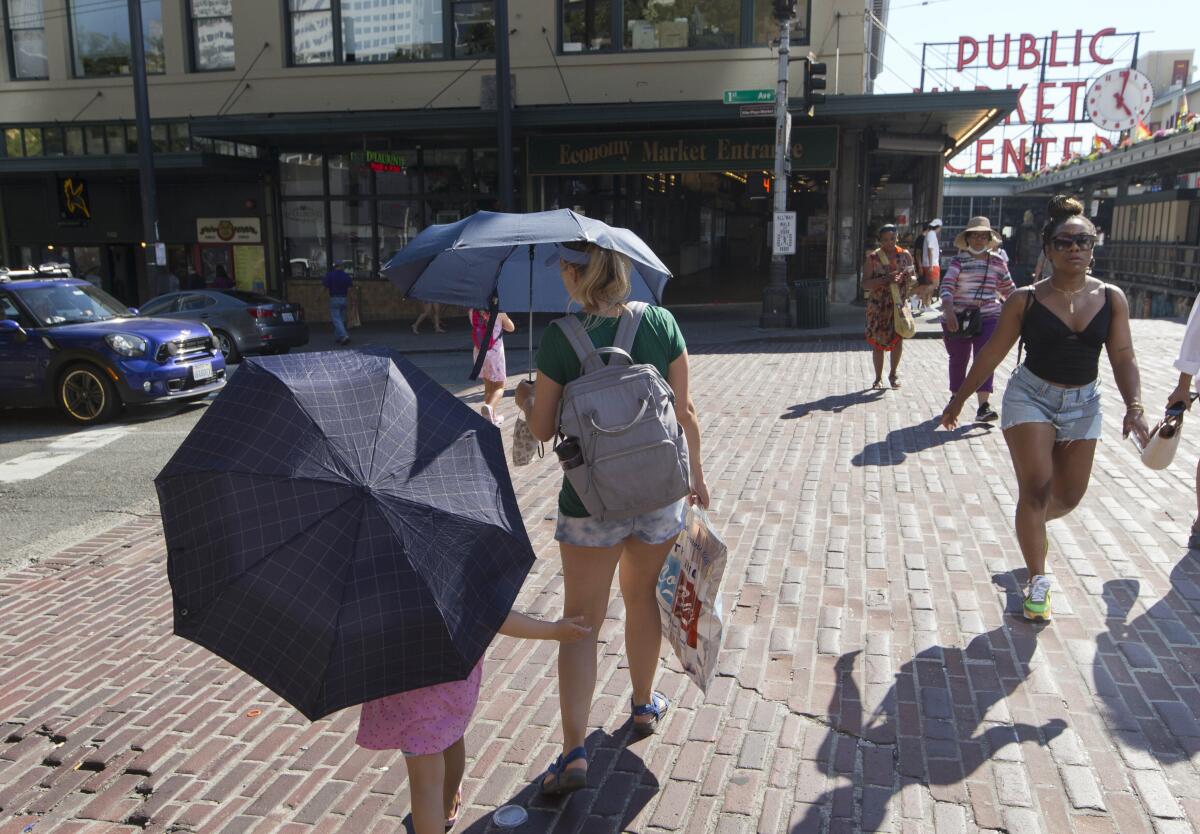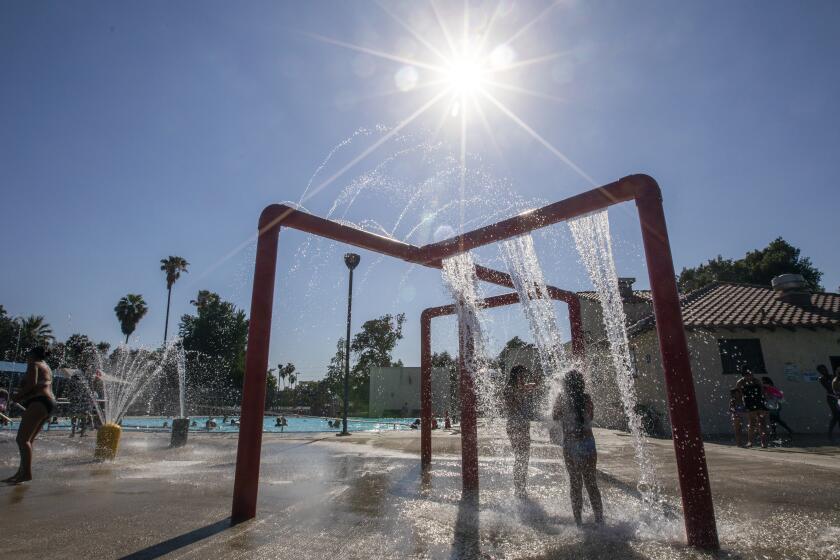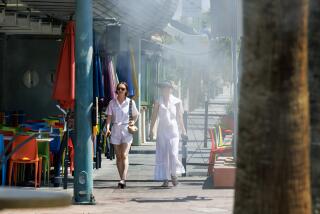Pacific Northwest endures hottest day of intense heat wave

- Share via
SEATTLE — The hottest day of an unprecedented and dangerous heat wave scorched the Pacific Northwest on Monday, with temperatures expected to obliterate records that had been set just the day before.
Seattle was predicted to reach up to 110 degrees Fahrenheit — well above Sunday’s all-time high of 104. Portland, Ore., could reach 115 degrees after hitting new records of 108 degrees on Saturday and 112 on Sunday.
The temperatures were unheard of in a region better known for rain, and where June has historically been referred to as “Juneuary” for its cool drizzle. Seattle’s average high temperature in June is around 70, and fewer than half of the city’s residents have air conditioning, according to U.S. census data.
The heat forced schools and businesses to close to protect workers and guests, including some places such as outdoor pools and ice cream shops where people seek relief from the heat.
In closing one public pool, Seattle’s parks department warned that “swimmers will burn their feet” on the deck.
“We unfortunately are unable to open up shop today due to the extreme heat,” Cloud City Ice Cream, in Portland, posted on its Facebook page over the weekend. “Temperatures are too high for our employees and equipment to operate safely.”
The heat wave was caused by what meteorologists described as a dome of high pressure over the Northwest and worsened by human-caused climate change, which is making such extreme weather events more likely and more intense.
Monsoon storms Tuesday through Thursday could bring dangerous lightning strikes, which have the potential to start fires amid hot, bone-dry conditions.
The blistering heat hit a region with infrastructure not designed for it, hinting at the greater costs of climate change to come.
In Portland, light rail and street car service was suspended as power cables melted and as the heat strained the power grid.
On Interstate 5 in Tukwila, Wash., heat-related expansion of the roadway caused a panel of pavement to pop loose. Workers in tanker trucks in Seattle were hosing down drawbridges with water at least twice a day to keep them cool to prevent the steel from expanding in the heat and interfering with their opening and closing mechanisms.
In many cities in the region, officials opened cooling centers, including one in an Amazon meeting space in Seattle capable of holding 1,000 people. Officials also reminded residents where pools, splash pads and cooling centers were available and urged people to stay hydrated, check on their neighbors and avoid strenuous activities.
The closure of school buildings halted programs such as meal services for the needy, child care and summer enrichment activities.
In Oregon’s Multnomah County, which includes Portland, nearly 60 outreach teams have worked since Friday to reach homeless people with water, electrolytes and information on keeping cool, said county spokeswoman Julie Sullivan-Springhetti.
The county had 43 emergency department and urgent care clinic visits for heat illness from Friday to Sunday. Typically, there would be just one or two, Sullivan-Springhetti said.
This part of the Sonoma wine country has endured fire, flood, intense heat and lightning bolts the last five years. Now it faces ever-more severe water restrictions.
The heat wave stretched into the Canadian province of British Columbia, with the temperature in the village of Lytton reaching 115 degrees Sunday afternoon, a new all-time high in Canada.
The heat was heading east, where temperatures in Boise, Idaho, were expected to top 100 for at least seven days starting Monday.
In eastern Washington state, the Richland and Kennewick school districts halted bus service for summer school because the vehicles aren’t air-conditioned, making it unsafe for students to travel in them.
Cline reported from Portland, Ore.
More to Read
Sign up for Essential California
The most important California stories and recommendations in your inbox every morning.
You may occasionally receive promotional content from the Los Angeles Times.















